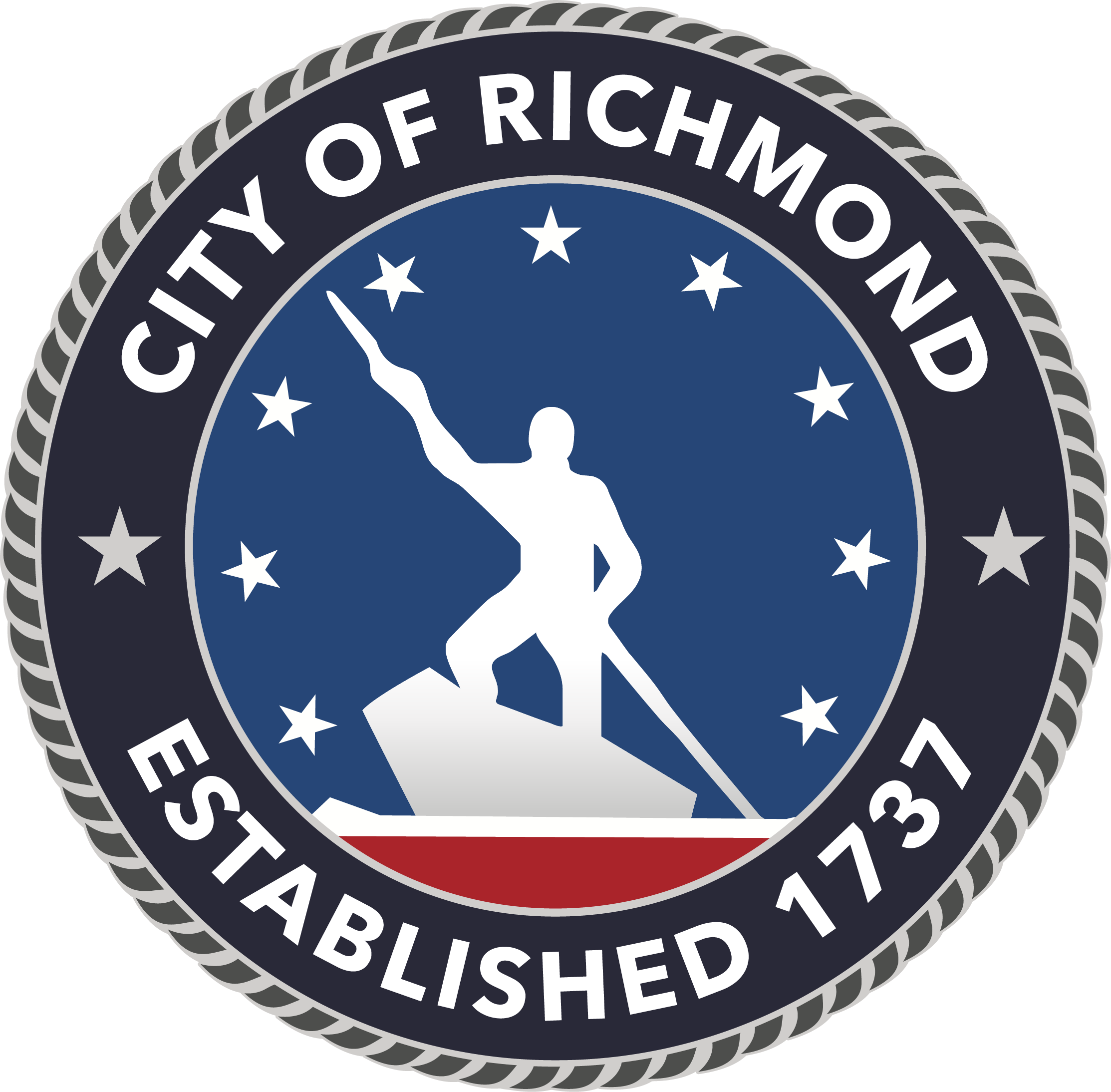Obtaining a Land Disturbing Permit
The Water Resources Division of Public Utilities monitors all land disturbing construction activities, erosion and sediment control, stormwater construction and Chesapeake Bay Act water quality requirements for all new and redevelopment projects.
When do I need a permit?
Any land disturbance equal or greater than 4,000 square feet or equal to or greater than 2,500 square feet in a Chesapeake Bay Protection Area (CBPA) must obtain a separate Richmond Erosion & Stormwater Management Program permit (RESMP.) This permit is for residential and commercial development and includes but is not limited to demolition of structures, new buildings and accessory structures, houses, roads, additions, grading/clearing & grubbing, foundations, changing/redesign of existing onsite storm drainage. Single family dwellings may be eligible for a slightly different process.
Permit requirement flow chart
What is required to submit a Permit?
Step 1: To best prepare your plans for plan review, use the appropriate checklist to ensure all the required information is complete. Stormwater Permit Intake Application Checklist
- Water Resources Environmental Plan Review Checklist
- A completed VESMP permit application
- A completed Responsible land disturber form with a copy of the certification
- A Civil set of drawings containing an E & S plan, Stormwater plan, SWPPP plan (if applicable), Chesapeake Bay site plan (if applicable) and all supporting computations. (The Stormwater Management Design and Construction Standards Manual can assist with all storm drainage design and specifications for proposed projects.) An electronic plan set is required with every application. Be prepared to come with an ftp site url location, thumb or jump drive with plans for downloading.
Where do I submit the VESMP application?
Step 2: The City has an Online Permit Portal for upload applications, documents, paying fees and checking on application status. In addition to have all of the documents listed above, you should know the following information before you submit your application:
- Property owner name, address, phone number and email
- Contractor’s name, address, phone number and email
- Design Firm name, contact person name, address, phone number and email
You will invoiced the remaining required fee. The fees are based on the amount of land disturbance.
What if I’m building one detached single family house?
All Single Family Dwellings (SFD) disturbing 4,000 square feet of land (or 2,500 square feet in a CBPA area) or more are required to submit a separate VESMP permit for all single family dwellings in or out of a common plan of development (subdivision). A building permit does not grant permission to construct a house. Single Family dwellings may be eligible for an Agreement In Lieu of Plan (AILP) in place of submitting a complete set of civil engineering plans. A small site plan along with a bond is required for those SFDs that are eligible for the AILP.
Use the Online Permit Portal to submit the application. Follow the steps under “Where Do I submit the VESMP Application.”
The following documents are required to be submitted for all SFDs:
- A completed VESMP permit application
- A completed Responsible land disturber form with a copy of the certification
- A small site plan (Example of small site plan here.) showing the following information:
-
- the proposed dwelling
- the adjacent street(s)
- The adjacent parcel(s)
- The limits of disturbance (LOD)
- Silt fence protecting the site (SF)
- A construction entrance (CE)
-
What if I’m building multiple houses at one time?
Building multiple structures on different but adjoining lots over a period of time is considered a Common Plan of Development and requires the submission of a VESMP permit. Follow the instructions for “How do I submit
What is the final step?
Step 3: Your plan reviewer will notify you when the plan is approve and ready for permit issuance. Prior to any VESMP permit approval the following information must be submitted:
- An unsigned Stormwater Utility Maintenance Agreement (SUMA) and plat
- E & S Bond package to include:
- The Bond payment. (A performance surety is required for every land disturbing project except City of Richmond Capital Improvement Projects (CIP).)
- A signed E&S Developers Agreement
- The E & S Control Measures spreadsheet
Additional Information:
- Bond amounts are determined by the amount of E & S measures required on the plans. Should you not complete your project, your surety will be utilized towards stabilizing the site and you will be billed for the remaining amount.
- The bond can be paid with a surety bond, check, or an irrevocable letter of credit. Sureties are submitted directly to: DPU Water Resources at 1801 Commerce Road. The E & S Developer's Agreement (DA) must be signed and E & S Control Measures Worksheet must be submitted along with the surety.
- The DA must be signed by the director (this can take up to a week).
- Written verification of the final inspection from the City of Richmond Erosion and Sediment Control Inspector is required before any portion of the surety is released. It is the owner's responsibility to request an inspection to obtain a surety release. The final inspection shall not be completed prior to 75% of living perennial vegetation being established. See Virginia Department of Environmental Quality C-SSM-10 Permanent Seeding Section 3.0 Planning and Considerations.
- Surety will be released once 75% vegetation has been established at the final inspection. Bonds should be release in 30 days.
- SUMAs must be submitted when a non-structural and structural best management practice (BMP) is proposed.
- The SUMA should be completed but not signed or notarized. It will be reviewed for correctness and returned for signature and notarizing.
- The final SUMA must be submitted to the City of Richmond’s City Attorney’s Office via the instructions listed here.
Chesapeake Bay Buffer Areas (CBPA)
Under the Chesapeake Bay Act framework, the City of Richmond is responsible for implementing its Bay Act program. The City of Richmond has adopted ordinance provisions that incorporate the performance criteria required by the Bay Act. Those provisions include City of Richmond, VA Municipal Code, Chapter 14 – Division 4: Land Use and Development Performance Criteria
The Chesapeake Bay Protection Areas (CBPA) are special areas of the city that are designated as having an impacting on or draining to the Chesapeake Bay. These areas are divided into area buffer areas, the Resource Management Area (RMA), the Resource Protection Area (RPA) and the Intensely Developed Area (IDA). . Development within the RPA and the 50 foot buffer land ward of a perennial water body, is restricted and requires mitigation of the impacts to the area beyond water quality. The Chesapeake Bay Information Manual provides guidance to the public on the Chesapeake Bay and its requirements. The Riparian Buffer Manual provides guidance on the RPA
Locally designated CBPA have been depicted on adopted Bay Act maps for the City of Richmond. These maps are to be used as a guide for applicants and local staff as to the general location of RPAs and RMAs on lots and parcels and should be used for planning purposes only. Once a project is proposed, a site-specific location of the RPA and the RMA must be determined.
The locally adopted CMA can be found here: Interactive Chesapeake Bay Map
The VA Department of Environmental Quality (DEQ) has enacted Stormwater regulations that require development in these areas to meet new water quality standards. Using specific data regarding impervious areas, the amount Water quality treatment for each site is determined using the Runoff Reduction Spreadsheet.
Using specific data regarding impervious areas, the amount of phosphorus to be removed from the water will be determined. Land development of one (1) acre or greater in non CBPA will also be required to provide water quality treatment as part of the REMSP permit approval.
For development criteria for RPA, refer to City of Richmond, VA Municipal Code Sec. 14-264. Applicants must submit an Application for Relief from Requirements of the Chesapeake Bay Preservation Program.
Useful Links
- City of Richmond Code Chapter 14 - Floodplain Management, Erosion and Sediment Control, and Drainage (Municode)
- Department of Environmental Quality (DEQ)
- Runoff Reduction Method
- Virginia Stormwater BMP Clearing House
- Interactive Chesapeake Bay Map
- Virginia Stormwater Management Handbook
- Stormwater Management Design and Construction Standards Manual
- FEMA Floodplain Map Service Center
- VA Flood Risk Information
- NFWF Wetlands Inventory
- Planning & Development Review







